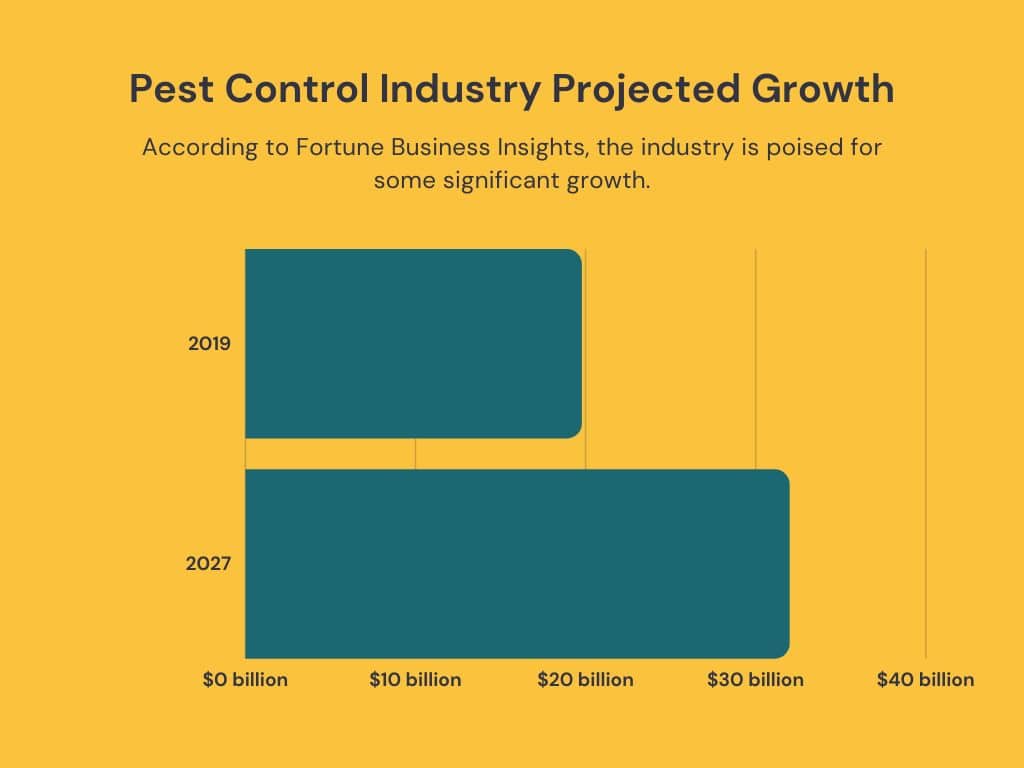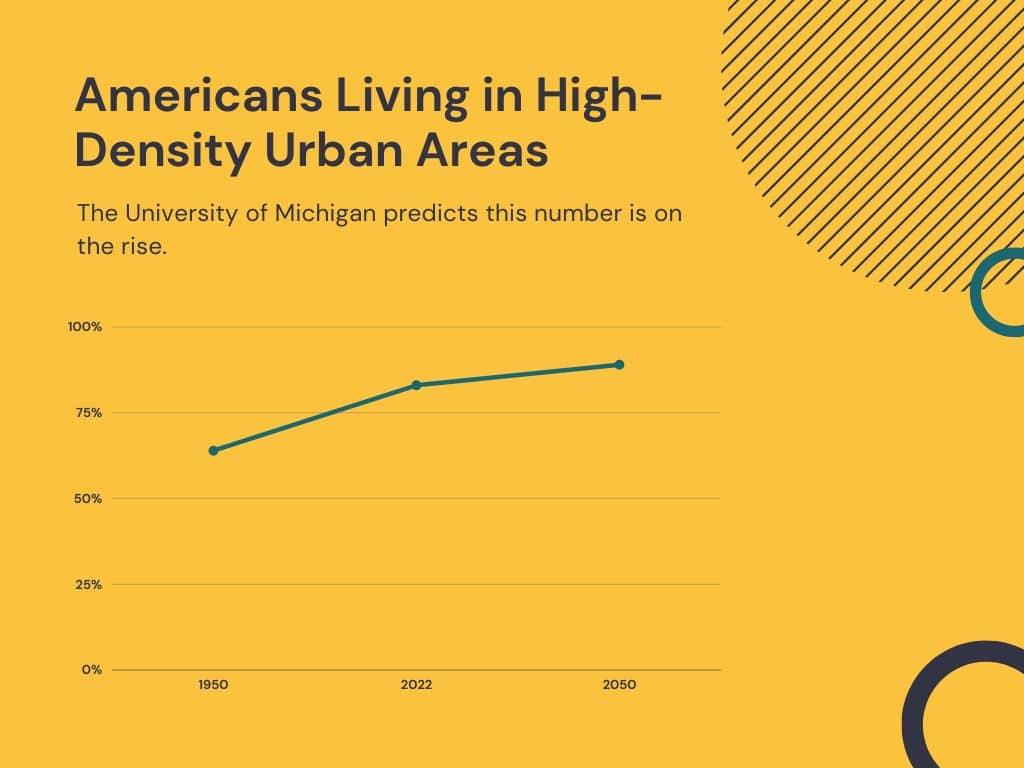Pest Control Industry Trends & Statistics
We’ve put together a list of 8 of the top pest control trends and statistics. Use these insights to guide your next steps, refine your focus, and build a profitable pest control business plan.

Staff Contributor
New technology, tighter laws, and shifting consumer preferences all impact the pest control industry.
If you want to maintain a competitive edge and be successful long-term, you need to stay up to date on all of the above. Not only that, but you also must use these new and emerging pest control trends to help map your business strategy.
In this article, we’ve put together a list of 8 of the top pest control trends and statistics.
Use this information to guide your next steps, refine your focus, and build a profitable business plan for the years ahead.
1. The industry will continue to experience steady market growth.

In 2019, the global pest control market size was $19.73 billion. Predictions estimate a 6.3% compound annual growth rate (CAGR) over the forecast period. The market size is expected to reach $31.94 billion by 2027.
Rentokil, which holds a significant portion of the market share, experienced a 5.5 % jump in revenue in 2021. Several factors are driving this growth. For example, a persistently (and disturbingly) high number of bedbug reports in homes, hotels, and even movie theaters.
2. Consumers and businesses are more aware of cleanliness.

Since the onset of the pandemic, 82% of people are more mindful of how they clean their homes. Most people have also changed their general attitude toward cleaning.
Additionally, more than 9 in 10 people are more aware of cleaning practices in public spaces. This trend could see both home and business owners seek to improve the overall cleanliness of their properties. The result? More money spent on pest control.
3. Biocontrol agents provide less toxic alternatives.
Biocontrol agents are an emerging alternative to chemical pest control. They’re natural predators and competitors used to reduce or maintain the population of a pest species.
Biocontrol agents have several benefits over their chemical alternatives. The biggest advantage is reduced toxicity.
In North America, the National Institute of Food and Agriculture supports the use of biocontrol strategies. Consequently, more pest control businesses will likely start including them in their services.
4. Urbanization will increase the demand for pest control.

In 1950, 64% of the US population lived in urban regions. Today, this figure has risen to 83%. Forecasts predict that by 2050, 89% of Americans will live in high-density urban areas.
As people move closer together, pests will spread more easily. Pests will also have easier access to the conditions they need to survive and breed, including ample food and shelter.
Therefore, pests will become more prevalent, and the demand for pest control will rise.
5. Insect control drives the most revenue.
The insect segment is the largest revenue-generating segment by pest type. It’s also predicted to grow 5% annually through 2027.
So, consider your pest control services. Are you focusing on insect control and removal? How can you adapt your marketing approach to further promote your insect control solutions?
Review your strategies and make any adjustments needed to ensure you’re capitalizing on the revenue potential of insect control.
6. Government regulations and legislation are becoming stricter.
Governments across the country are introducing stricter regulations outlining the use of pesticides. They’re also requiring higher standards of cleanliness and increased documentation for businesses.
For example, second-generation anticoagulant rodenticides (SGARs) were banned in California on January 1, 2021. Although new laws will impact how pest control businesses operate, more regulated hygiene standards should drive an increase in the demand for commercial services.

7. Software enables smart pest control and prevention.
Software developed specifically for pest control businesses is changing the face of day-to-day operations. It’ll likely lead to a significant boost for the industry.
Examples of leading software include SalesRabbit, PestPac, and Briostack. These tools empower pest controllers to manage their teams, automate admin tasks, collect and analyze pest data, and more.
Adopting pest control software now could give your business a first-mover advantage.
8. The boost in new home builds will contribute to the market.
In September 2022, 1,427,000 privately owned houses were constructed. This is 15.7% above the September 2021 rate of 1,233,000. This considerable increase will likely drive a boost in demand for pest control services now and for many years to come.
You might want to consider expanding your service area to include newly constructed estates. Or try contacting local builders to offer your services to their clients.
Set Your Pest Control Business Up for Success
All in all, the future looks bright for the pest control industry. And best of all, setting up your business for success in this industry doesn’t have to be a pest.
By leveraging your knowledge of the above trends, you can plan your strategic next steps to ensure your pest control business thrives.
Melissa can masterfully bring to life any form of content, whether it’s a landing page or a guide to befriending gnomes. When she’s not crafting stories, she’s either crocheting, smothering her cats in unwelcome affection, or spending time with her husband.


